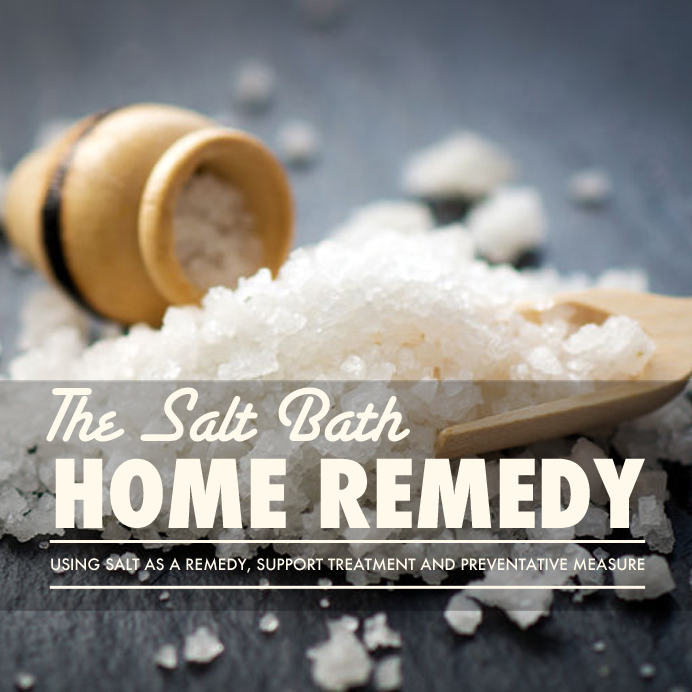Dr. Jodi Vingelen, ND
@VLM_Dr_Jodi
“There must be something sacred in salt. It is in our tears and in the ocean.” ~Khalil Gibran
Salt has been used therapeutically for many centuries across many cultures. It has been used as a remedy, a support treatment, and a preventative measure. It has been taken internally or applied topically and been administered in an exceedingly wide variety of forms.1 Water and salt are the foundation to the creation of life. As mentioned by healer, Rosita Arvigo, “water is sacred and can purify and cleanse the spirit”3. Did you know that after a corpse is incinerated what remains is ash, which is salt2? I would like to share one therapeutic use of salt, which is the Epsom salt bath.
Epsom salt is magnesium sulfate. It is a compound of two minerals, magnesium and sulfur. When your body is low in magnesium you could have sensitivity to sounds, twitching, tremors, dizziness, rapid heartbeat, aching muscles, fatigue, depression, grouchiness, insomnia, irritability, hyperactivity, and anxiety. When there is too much magnesium, drowsiness, lethargy, sluggishness, stupor and coma can come about. When there is a possible sulfur deficiency, it is possible to be sluggish and fatigued. Too much sulfur can be irritating to the skin and lungs and there is low toxicity internally. The occasional use of Epsom salt in bath water can help with a deficiency in these minerals. It is important to talk to a doctor regarding the deficiency of any mineral, to derive the root cause of the mineral deficiency. And let’s not forget the importance of proper nutrition to address mineral deficiencies.
So you may ask, when do I need to take an Epsom salt bath? Salt is being increasingly used as support treatment for skin diseases. Chronically inflamed skin is treated with medical bath salt from the Dead Sea, Epsom or table salt. The salt peels off dandruff, reduces inflammation, itching and pain, and helps regenerate the skin. Salt-baths are frequently used to treat psoriasis, atopic dermatitis, chronic eczema as well as arthritis. Sometimes (as in psoriasis), this therapy is followed by ultraviolet light radiotherapy under strict medical control so that the combination of salt water and UV light does not expose patients to an increased risk of skin cancer1. As well, I have found the Epsom salt bath to soothe muscles after vigorous physical activity.
Alternatively, there are baths that utilize herbs and peat. In a future post, I will discuss theses other options for a therapeutic bath.
 Dr. Jodi Vingelen is Austin city’s naturopathic doctor rooted in natural solutions.
Dr. Jodi Vingelen is Austin city’s naturopathic doctor rooted in natural solutions.
Passionately, I utilize nature cure methods personally and professionally. One of my favorite “treatments” is the cold plunge. After a nice long walk or run, there is nothing more rewarding than to come up to a beautiful alpine lake or a flowing river to take a quick dip in the refreshing cold water. It is a stimulating experience. I hope that by reading my short essays on nature cure that you will be enticed into this lifestyle that my patients and I find to be re-vitalizing.
Graduated from Bastyr University (Kenmore, WA). Dr. Jodi Vingelen is a WA state licensed ND*.
*Currently Texas does not license Naturopathic Doctors. Naturopathic Doctors are NOT Medical Doctors (MD/DO); therefore, Dr. Vingelen, ND cannot legally prescribe pharmaceutical drugs, administer injections, diagnose, treat or cure any illness.
References:
- Eberhard J. Wormer. A taste for salt in the history of medicine. Leonrodstr. 32, 80636 München, Germany.
- Hendel, Barbara and P. Ferreira. Water & Salt The Essence of Life. Water & Salt AG Baar, Switzerland. 2007: 80-111.
- Arvigo, Rosita and N. Epstein. Spiritual Bathing. Celestial Arts: California. 2007:2.




